PROVENCE TO COMMEMORATE “THE FORGOTTEN D-DAY”
Twenty six years ago today, August 15, 1944, Allied troops landed in Provence to help liberate Europe from the Nazis and end World War II.
The Allied invasion of Provence, code-named Operation Dragoon, got overshadowed by the better-known D-Day invasion in Normandy two months before (June 6, 1944). So much so that it got dubbed “The forgotten D-Day.” Yet 66 years later, Provence is strewn with memorials to the Provence landings. And this August 15, at least one community will devote the whole day to remembering the historic military campaign that freed southern France from occupation.
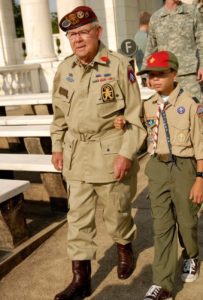
A Boy Scout helps escort a veteran from his bus
into Arlington National Cemetery’s Memorial
Amphitheater for the Operation Dragoon
commemoration ceremony, Aug. 5 2009.
Source: Wikimedia Commons
Two hours from our rental apartment in Lourmarin, the Mediterranean port of Sainte-Maxime will hold an all-day event this August 15 commemorating the Provence landings. Plans call for a morning parade of vintage military vehicles and an afternoon march on foot through town. After a parade of boats and a Blessing of the Fleet, there will be a solemn mass followed by musical fireworks and two balls, including a “retro” ball on the town’s market square.
Meanwhile, monuments and plaques commemorating the invasion are scattered across Provence. These include monuments to the Provence landings on the Saint-Tropez beach, and a massive memorial to the landings in Mont Faron, in Toulon.
In the military cemetery of Luynes, French President General de Gaulle ordered many fallen French soldiers re-buried after the war. http://tinyurl.com/2flp7bp
American soldiers were buried in the military cemetery in Draguignan. http://tinyurl.com/2g2mpng
Provence offers visitors other grim reminders of World War II. Just outside Aix-en-Provence, about 37 kilometers from Lourmarin, the Memorial National des Milles marks the site of the “Camp des Milles.” Here, more than 10,000 prisoners from 27 countries were interned, including foreign Jews who fled anti-Semitism outside France only to be deported to Auschwitz. Le Camp des Milles is the only remaining such camp in France and sufficient funds have now been raised to allow the site to be opened to the public as soon as 2011. Alain Chouraqui, Chairman of the Steering Committee of the project “Mémoire du Camp des Milles,” wrote “The ambition of this project is to strengthen the visitor’s vigilance and sense of responsibility, especially that of young people, given the permanent threats posed by racism, anti-Semitism, fanaticism and totalitarianism.”
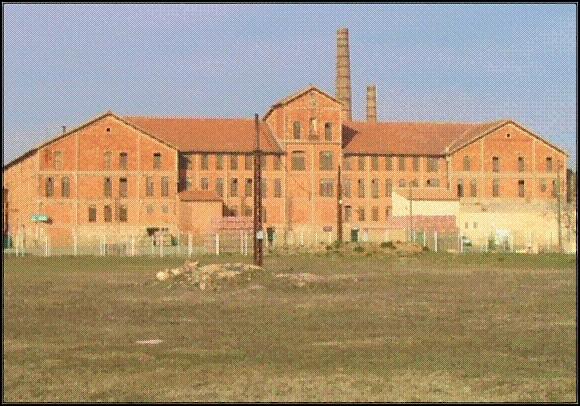
Camp de Milles. Source: http://www.campdemilles.org/
Some two hours from Lourmarin, the Artillery Museum in Draguignan traces the evolution of weapons from their beginnings through World War II. The museum boasts a collection of cannons from 1730 to 1945. http://tinyurl.com/257dmru
The Allied effort to liberate Nazi-occupied Europe was well underway when the US, British and Free French joined forces to free southern France two months after D-Day. Among the French troops were African commandos from French West Africa, French Equatorial Africa, and North African Muslim troops from Morocco, Algeria and Tunisia.
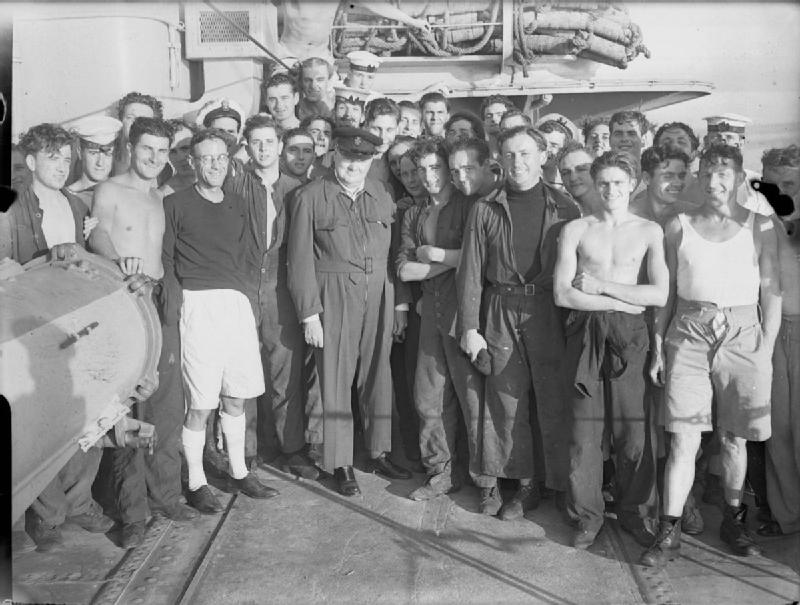
WINSTON CHURCHILL WATCHES THE INVASION OF THE SOUTH OF FRANCE ABOARD HMS KIMBERLEY. Source: Wikimedia Commons
Operation Dragoon involved bombardment from air and sea and a massive amphibious operation focusing on three Mediterranean beaches code-named Alpha (Cavalaire-sur-Mer) to the west, Delta (Saint-Tropez) and Camel (Saint-Raphael) to the east. US and British military planners originally disagreed over the plan, with British Prime Minister Winston Churchill objecting that it would divert much-needed troops from fighting elsewhere in Europe. General Dwight D. Eisenhower, supreme commander of Allied forces in Europe, finally approved the plan in July, when he deemed the Normandy invasion a success.
Like the Normandy invasion, a secret message from London, “the chief is starving,” launched the attack. Before the landings, French resistance fighters cleared German forces from the three beaches. Just after midnight on August 15, Allied forces pummeled the Hyeres island batteries. The African soldiers landed and later took Cap Nègre. More troops negotiated a minefield at le Trayas. Coming by sea, Allied troops landed on the three beaches, backed by troops arriving at Sainte-Maxime a few hours later. Meanwhile, Allied paratroopers attacked from the air, landing by parachute in the Le Muy-Le Luc area, with combat gliders bringing reinforcements. By 4 a.m., some 5,000 Allied paratroopers had dropped from Provence skies into the valley of l’Argens; 10,000 paratroopers had landed by the end of the day.

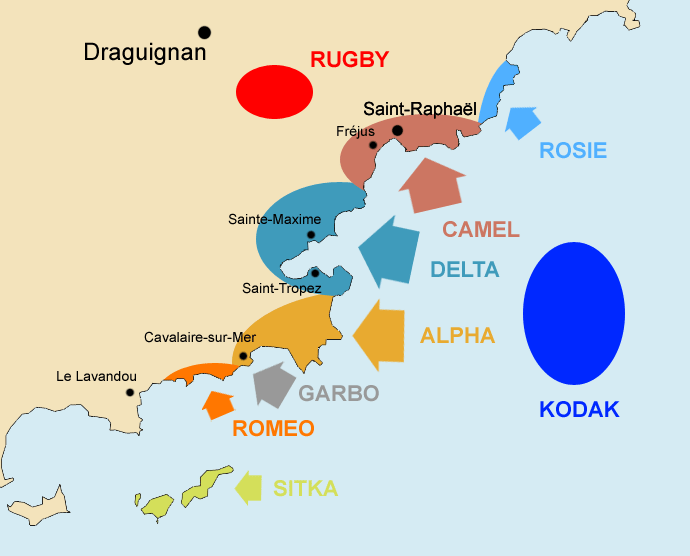
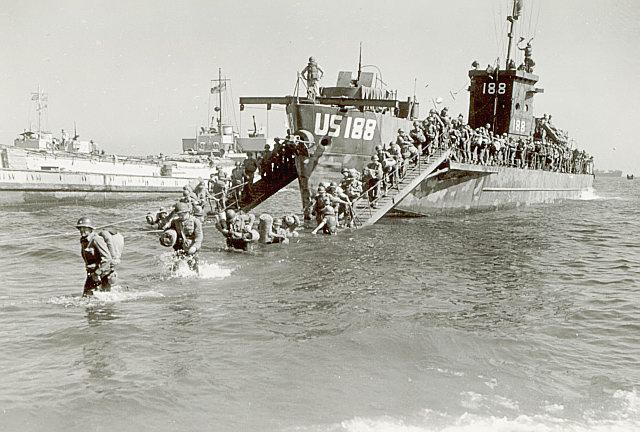
Susan, I am fascinated by this D-Day piece as I am in the midst of writing a novel about the French Resistance in the Southwest in 1944. In all the research I have done (tho' specifically not about Provence) I didn't know about this invasion. Tres interesant, en effet! I can't wait to get there and see the local memorials. Thanks for the "heads up"!
PS- I do not understand the "profile" thing so I just picked one…
So glad you all have started a newsletter. I love getting a weekly dose of Provence. I didn't realize that the areas around Lourmarin had such strong involvement in WWII. Thanks for the informative retrospective!
When we first went to Lourmarin, about ten years ago, a good friend of ours introduced us to her octogenarian mother who had been in the French Resistance and whose husband had been involved in some manner with the invasion. I say “in some manner” because I was only able to decipher some of what this lovely woman was saying and have retained even less as the years have passed — my French language comprehension was not strong at the time and her French was spoken with a very rapid cadence and an especially strong Provençal accent. Nonetheless, I was captivated by her unadulterated stories of real bravery and everyday sacrifices; she spoke in the most matter-of-fact manner about these things, as if that was simply what was done in the name of humanity and their beloved country. She became very emotional and teary when she talked about the Allied invasion and of her especially warm feelings for the American troops she met. We had never heard about this “other D-Day” and were riveted. She brought out a dusty old box with a veritable treasure trove of period newspapers and photographs for us to see. It was important to her that people knew about the invasion and knew that Provence had played a role, albeit a small one, in ending the war. And, she wanted us to know how appreciative the French were – and still are – about the integral role Americans played in the liberation of France.
Hi Susan, as promised….you should look up Jean Moulin, famous French WWII resistance fighter. When driving to one of our favourite villages, Eygaliere, we drive along the route Jean Moulin and that's how I found out about him….as I was curious why it was called route Jean Moulin….
Lis 🙂
Hi Lis,
Monsieur Moulin sounds like a good topic for a future post! (hint… hint….) We, too, often go to Eygalière (Eygalières? I see it spelled both ways). I love their market and Chez Bru — have you eaten there? (Absolutely wonderful fare.) I will look for the route with his name! Thanks so much for your post!
All the best,
Susan
Dear Susan,
Love the newsletter. It brings back out the sense of Provence . Keep up with it, but don't worry about a schedule. It's Provence , after all. The concept of a schedule can be kept loose. I am currently living and working in the UK ( Suffolk , England ). I have many fond memories of my short stay at your place a few years back. Work right now is long and hard, but if I can pry some time away, I'll consider a jaunt across "La Manche". I see from your website that you sold L'Oustalon. Is it still available to rent? Nothing firm in mind yet, but want to keep my info up to date.
Looking forward to reading more and hearing back from you.
Best regards,
Tom Polito
Hi Tom,
So good to hear from you! Thanks for the positive feedback and encouraging philosophy about keeping a publication schedule (or not!).
L'Oustaloun is definitely still available for rent. We were fortunate to sell that sweet place to a lovely woman, Pru, who continues to rent it. You may still go through http://www.rentourhomeinprovence.com to reserve a week (or two!).
All the best,
Susan
Why no mention of the Brazilian forces involved, there's a plaque on the beach at Cap Estrel. I know their involvement sounds improbable, but they were there.
Where does one subscribe to the noted Provence NEWSLETTER? My wife & I recently vacationed in Aix and plan to spend 6-8 weeks in that area next year.
Thanks! Jim B. In sunny FL